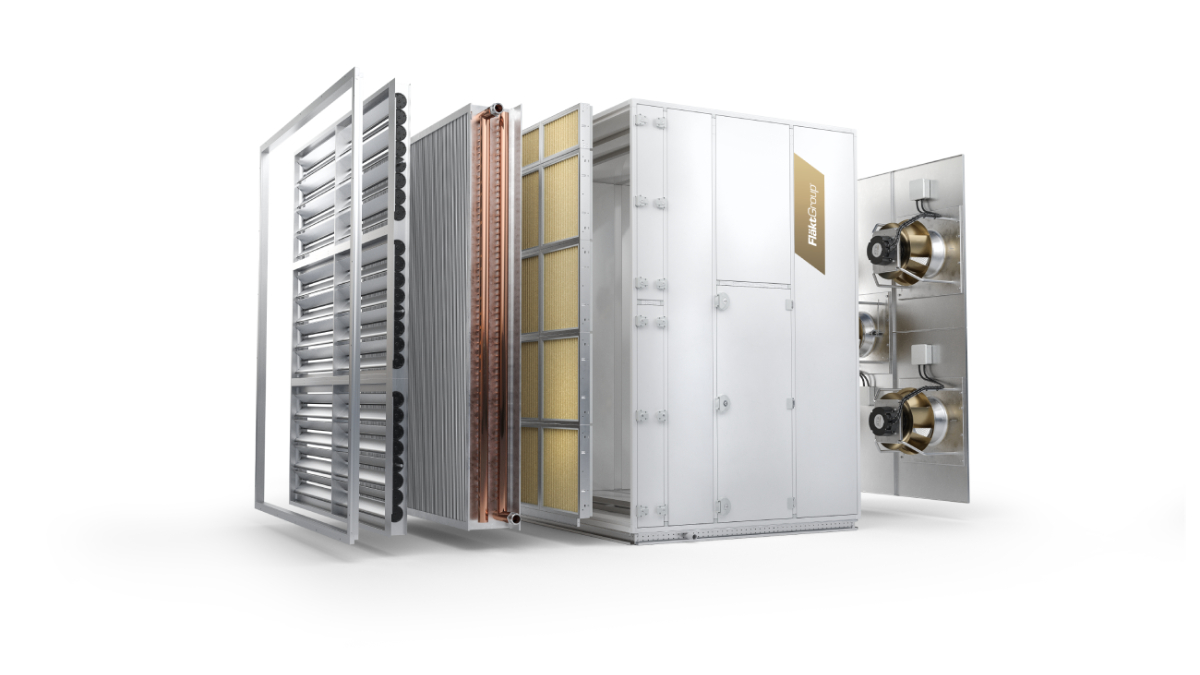FläktGroup reflects on the important role air still plays in the evolving landscape of data centre cooling.
What does the ubiquity of virtual reality (VR) in everyday life, blockchain beyond cryptocurrency, augmented reality (AR) in retail, 3D printing in homes, and edge computing all have in common? The answer: our experience of these technologies have not matched the surrounding hype.
That is not to say these technologies and their uses are still not evolving. Of course they are, and we would expect to see their impact still unfolding in significant ways in the future. At this moment in time, we also should recognise there is a gap between the proposed technology and need in the real world. The same can be said about the proposed non-air related cooling systems in data centres.
The versatility of air cooling
We know that data centre loads are changing significantly. Two of the key drivers of this change are artificial intelligence (AI) and machine learning (ML). There is a widespread belief that the demanding processing power of these applications unequivocally necessitates specialised and unconventional cooling solutions, such as direct-to-chip and liquid immersion. However, this assumption, while relevant for very specific GPU-based high-performance computing tasks, does not universally apply. In reality, the vast majority of current AI/ML applications do not require such extreme measures.
Air, or more accurately the movement of air, is so versatile that if (a small word that embodies big engineering) managed properly, is more than capable of taking on the evolving cooling needs of modern data centres today and in the future. It is true that these data centres now have, and will continue to have, diverse cooling demands of AI and ML applications. However, these tasks can easily be handled with advanced air cooling systems and methodologies. The notion that superior performance is exclusive to liquid cooling solutions in data centres is incorrect.
The overarching strategy in data centre management has always been to distribute workloads to alleviate hot spots and ensure uniform cooling at the desired set-point. This strategy has always been supported by air-based systems. The distributed workloads has become, and will continue to become more complex with AI/ML, but by thoughtful design of the data centre halls relative to anticipated workloads, facilities can maintain optimal performance without resorting to specialised liquid cooling systems.
Understanding the challenges
Success in this area relies on a deep understanding of the relationship between demand, heat and air movement. Strong global cooling solution providers, such as FläktGroup, take a holistic approach to the effective management of this three-way dynamic. By working closely with data providers/owners and data centre designers, it becomes clear that taking advantage of the versatility of air through more innovative engineering will continue to meet the challenges of load demand complexities in data centres. These systems, marked by intelligent design and exceptional control mechanisms, will continue to handle substantial heat loads by optimising airflow and improving heat transfer efficiency.
Leonardo da Vinci once remarked “simplicity is the ultimate sophistication”. We believe it takes straightforward solutions to address complex problems, be they mechanical, financial, environmental, maintenance, or sustainability. It’s the power of simplicity that prevails.
That being said, no one knows what data centres will look like in 2040. Societal and business needs are evolving constantly and this will naturally be mirrored within the data centre environment. Therefore solutions and engineering will also evolve, so a diverse toolset will always be required to tackle the future. This article does not necessarily favour air cooling or indeed to fully commit to liquid cooling; instead, it advocates for the right tool for the right application. The question is: what is the pragmatic tool to use today that will continue to satisfy the needs of tomorrow?
Meeting the demands of the future
As a provider of cooling solutions in data centres, FläktGroup will continue to work with the industry and develop the right solutions – which includes non-air based technologies – at the right time for the right purpose. We know that rack densities are consistently increasing. However, it is clear the increase is gradual rather than in large steps, with the vast majority of racks within data centres still operating below 30 kW, which can be comfortably managed by air movement.
As we move to a more mixed environment within the data centre white space, hybrid solutions will become more prevalent and liquid will begin to support air based systems, typically for over 30 kW rack densities. This is already happening with coolant distribution units (CDU) supporting passive/active rear door cooling, as well as row-based cooling within the aisle containment. These systems form an important part of FläktGroup’s cooling solutions portfolio.
FläktGroup’s cooling technologies serve as a robust ally in the era of AI and ML. The latent power of air remains, for now at least, a stalwart guardian in the complex and evolving landscape of data centre cooling. Whether managing standard server applications or the dynamic requirements of AI-driven processes, FläktGroup is dedicated to innovation, ensuring that cooling solutions, whatever the methodology, remain efficient, effective, and environmentally responsible as the digital world, underpinned by AI and ML, transforms our physical world.


